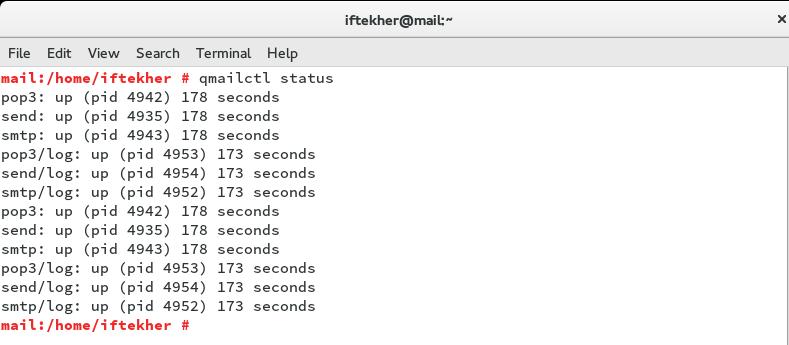Install Qmail On Centos 7 Change Time

You should consider to submit your own serial numbers or share other files with the community just as someone else helped you with SoftIce v4.05 serial number. 4 equals 5 proof.
Jan 31, 2008 i have used Qmail on centos i used www.lifewithqmail.org and i got the book its very easy to use (pdf is gd). CentOS 7 ↳ CentOS 7 - General Support ↳ CentOS 7 - Software Support. ↳ CentOS 4 - Oracle Installation and Support ↳ CentOS 4 - Miscellaneous Questions ↳ CentOS 5.
Q: I recently installed my first CentOS 7 Linux system and am having a hard time setting the clock correctly. I seem to be setting it correctly, but when I come back to the system a day or two later the time is not correct. It is usually a few minutes to an hour off. Gruppa sadko diskografiya torrent. A: If you clock is drifting that much in a short time it might be a symptom of another problem. But, maybe I can help with your initial question. Since the move to systemd setting the time and date is a little different on CentOS 7, Red Hat 7, or newer Fedora systems. Here we will show you the new timedatectl followed by the old trusty date command.
Using the timedatectl command. Now that Red Hat Linux has moved to systemd, we have a new way to set the clock. The timedatectl command is very easy to use and an efficient way to set the time and date on your system. NOTE: You must run the following command with root level permissions by either changing to root, or using sudo. Timedatectl set-time 22:31:14 To set the current date, use the timedatectl command with the set-time option using the date format (YEAR-MONTH-DAY) followed by the current time: timedatectl set-time '2015-04-15 22:37:22' NOTE: If you do not include the current time when changing the date you clock will be set to 00:00:00. Changing the Timezone with timedatectl To change the timezone, you can use the timedatectl command with set-timezone option followed by the desired timezone: timedatectl set-timezone America/New_York For a list of acceptable time zones, use the list-timezones option: timedatectl list-timezones If you know the name of your timezone you can use grep to easily find the exact syntax. Timedatectl list-timezones grep -i york America/New_York Or to list all the timezones in the Americas: timedatectl list-timezones grep America Enable NTP with timedatectl command You can also enable or disable automatic clock synchronization using the remote NTP servers.
I prefer this over setting the clock manually for many reasons. Enabling this should help keep your clock from drifting as described in the original question. To enable NTP clock syncronization, use set-ntp option with “yes” to enable or “no” to disable. Read our tutorial on learning. Timedatectl set-ntp yes NOTE: Setting the set-ntp boolean to yes will enable chronyd or ntpd service, depending on which is installed on your system. Using the date Command We still have the option to use the old linux date command to set or show the current time and date. Displaying Current Time and Date with the date command To display the current time and date simply type date at the command line like so: [root@putor ~]# date Wed Apr 15 13:02:19 EDT 2015 You can also use a custom format to display the time.